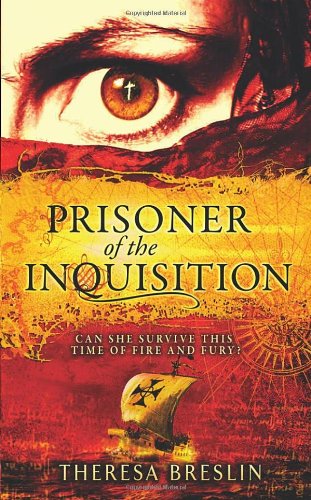Prisoner of the Inquisition
Set in 15th-century Spain at the height of the Inquisition, this novel skilfully weaves a complex plot of punishment, death and betrayal with the story of Christopher Columbus’s search for patronage for his plan to cross the Atlantic. Zarita, the 16-year-old daughter of a wealthy magistrate, unintentionally causes the killing of a beggar – a man whose son, Saulo, swears vengeance on Zarita and all her family. Taken to sea as a galley slave, Saulo eventually learns navigation skills and becomes a mariner. Zarita, meanwhile, experiences unhappy life changes, in particular the enmity of her father’s new wife.
When the Inquisition comes to Zarita’s home town in the shape of Father Besian and his entourage, the inquisitors use the magistrate’s home as their base of operations. While there they interview all the people in the house. A simple-minded servant falls into their net, and as a result is brutally tortured. Overnight the town becomes a place of suspicion and fear, and people begin betraying their neighbours. Even Zarita, frightened by the priest’s questioning, points the finger at the town’s prostitutes, and is later appalled by her actions when she sees them scourged in the market place.
After Saulo begins to put his vengeance into action, Zarita retreats to a nunnery founded by her aunt Beatriz. Saulo travels with Christopher Columbus to the court of Ferdinand and Isabella, where at last he once again encounters Zarita and Father Besian, and the Inquisition continues its deadly work.
Theresa Breslin creates a strong sense of the fear induced by the Inquisition and shows how its tentacles reached out to engulf even the rich and powerful. The moment a person was taken for questioning they would be deserted by friends, servants, anyone with a link to them. With a powerful plot, larger-than-life characters and dramatic style and setting, this novel should appeal to teenagers of both sexes.










